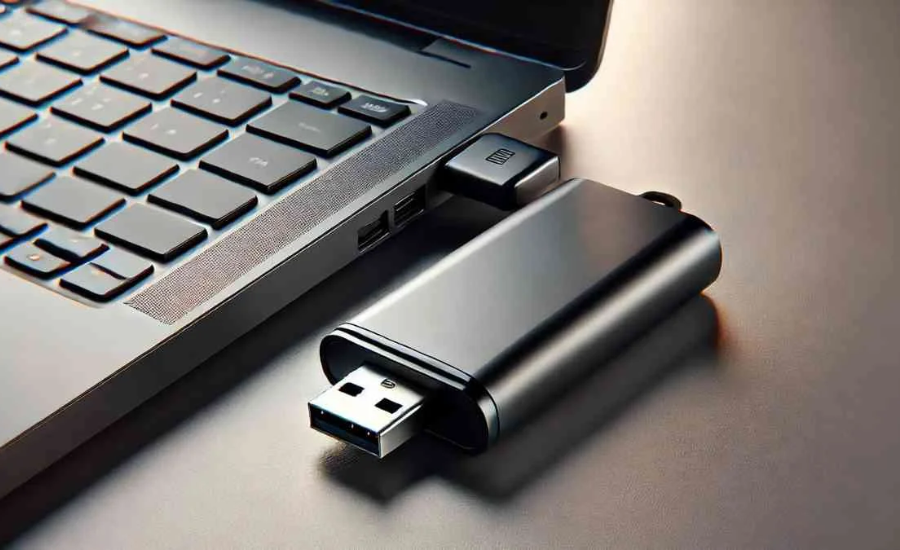In today’s digital landscape, where users expect seamless browsing experiences, website speed has become a critical factor in determining overall success. A fast-loading website is not only crucial for retaining visitors but also for enhancing SEO rankings and boosting conversion rates. Optimizing design elements, particularly images, is one of the most effective ways to improve website performance. Among the various types of images used on a website, thumbnails play a key role in ensuring quick load times without compromising on visual appeal.
Thumbnails like PH-A45_BK_16-THUMB.JPG offer a strategic advantage in web optimization, providing a powerful means of speeding up your site without sacrificing aesthetics. This article will explore the impact of thumbnail optimization on website performance and how using well-compressed images, like PH-A45_BK_16-THUMB.JPG, can make a significant difference.
The Critical Importance Of Website Speed In Enhancing User Experience And SEO Rankings

Website speed is not just a matter of user convenience—it’s a vital factor that influences key performance indicators such as bounce rate, user engagement, and conversion rates. Research consistently shows that users expect a page to load in under 3 seconds. If a website takes longer than this, visitors are likely to abandon the site, leading to higher bounce rates and reduced traffic. This abandonment directly affects SEO rankings as search engines like Google take page load times into account when determining search engine results rankings.
Moreover, the user experience (UX) plays an essential role in converting visitors into customers. A slow-loading site not only frustrates users but also reduces the likelihood of conversion actions such as purchases, sign-ups, or content sharing. Therefore, website speed is a fundamental element of both web design and optimization that impacts SEO and overall business performance.
How Thumbnails Contribute To Faster Website Load Times
Thumbnails are reduced-size versions of larger images, commonly used as previews or placeholders on webpages. Their purpose is to provide users with a quick overview of the content without needing to load the full-size images right away. Thumbnails are typically used in galleries, product catalogs, blogs, and portfolios where multiple images need to be displayed on a single page.
The primary advantage of using thumbnails is their smaller file size. Compared to full-size images, thumbnails consume less bandwidth and load much faster, which leads to improved page load times. By replacing large images with optimized thumbnails, you can reduce the amount of data transferred during page loading, making the website feel faster and more responsive. Even on image-heavy pages, this strategy helps maintain a visually appealing layout without sacrificing performance.
For example, using a thumbnail like PH-A45_BK_16-THUMB.JPG ensures that the full image doesn’t need to be loaded upfront, allowing users to engage with the content immediately. As a result, users can access the site quickly, enhancing their experience and reducing the likelihood of bouncebacks.
Effective Strategies For Optimizing Thumbnails like PH-A45_BK_16-THUMB.JPG To Improve Website Speed
To maximize the benefits of thumbnails and improve website performance, there are several key optimization strategies to consider:
1. Optimize Image Size and Resolution for Maximum Efficiency
The first step in optimizing a thumbnail like PH-A45_BK_16-THUMB.JPG is compressing it to reduce its file size while maintaining its visual quality. Large image files can slow down page load times significantly. Tools like TinyPNG, ImageOptim, or Adobe Photoshop can help compress images without a noticeable loss of detail.
By using smaller file sizes, your site will require less time to download images, leading to faster page loading. The goal is to strike a balance between file size and image clarity to ensure that both performance and aesthetics are optimized.
2. Choose the Right File Format for Optimal Performance
The choice of file format is crucial for optimizing images effectively.The right file format can improve image compression without compromising quality. Thumbnails like PH-A45_BK_16-THUMB.JPG are best saved in JPEG or WebP formats. JPEG offers an excellent balance between compression and image quality, making it a popular choice for photographs and detailed images. On the other hand, WebP offers superior compression, allowing for smaller file sizes while maintaining similar or even better image quality.
Testing both formats and selecting the one that delivers the best performance on your site can enhance loading speed and overall user experience.
3. Implement Lazy Loading for Better Performance
Lazy loading is an optimization technique where images are loaded only when they come into view on a user’s screen, rather than loading them all at once as soon as the page is accessed. This technique helps to minimize initial load time, especially on pages with a large number of images or thumbnails like PH-A45_BK_16-THUMB.JPG.
By using lazy loading, you can improve initial page load times, save bandwidth, and prevent unnecessary data from being loaded. Adding the loading=”lazy” attribute to image tags ensures that thumbnails are only fetched when needed, improving page speed while maintaining a seamless browsing experience.
4. Optimize Thumbnails for a Mobile-Responsive Experience
Given the increasing use of mobile devices for web browsing, it’s essential to optimize your images for responsive design. By creating multiple versions of thumbnails like PH-A45_BK_16-THUMB.JPG in varying sizes, you ensure that smaller devices (like smartphones and tablets) only load the smallest versions of the thumbnails. On larger devices, such as desktops, users will see high-quality images without unnecessary file size overhead.
Responsive images are crucial for mobile optimization. They reduce unnecessary bandwidth usage, ensuring faster load times for mobile users and ultimately improving the user experience.
5. Leverage a Content Delivery Network (CDN) for Faster Delivery
A Content Delivery Network (CDN) is a network of servers located in various geographical regions that store copies of your website’s images. By using a CDN to serve thumbnails like PH-A45_BK_16-THUMB.JPG, users can download images from a server located closer to their physical location, reducing latency and improving load speed.
CDNs ensure that images are delivered quickly, regardless of where your users are located, which is especially important for websites with a global audience. Improved image delivery reduces page load times and helps maintain a consistent user experience across different regions.
6. Utilize Caching for Faster Repeat Visits
Caching is another powerful optimization strategy that reduces load times for returning visitors. By setting appropriate cache headers for thumbnails like PH-A45_BK_16-THUMB.JPG, you can store these images on users’ devices. When visitors return to your site, the images will be loaded from their local cache, instead of being downloaded again from the server.
Caching reduces data transfer, enhances performance, and improves load times on repeat visits, creating a smoother and faster user experience over time.
7. Use Image Sprites to Optimize Multiple Thumbnails
If your website contains numerous small thumbnail images, such as those used in galleries or product listings, you can combine them into a single image file called an image sprite. This technique reduces the number of HTTP requests needed to load the images, as the browser can load all the thumbnails from one file.
By utilizing image sprites for multiple thumbnails like PH-A45_BK_16-THUMB.JPG, you can further optimize your site’s performance by speeding up image loading times. This method is particularly beneficial for image-heavy websites, reducing the overhead of multiple image requests.
Key Benefits Of Optimized Thumbnails like PH-A45_BK_16-THUMB.JPG For Website Performance

Optimizing thumbnails provides several benefits that contribute to better website performance, enhanced user experience, and increased engagement. Here are the main advantages:
1. Faster Page Load Times
Optimized thumbnails help reduce page load times by loading smaller files instead of large images. This ensures that users can access your website faster, particularly on mobile devices with slower internet connections. Faster page loads reduce bounce rates, keep visitors engaged longer, and improve overall site performance.
2. Improved User Experience (UX)
A faster website translates directly into a better user experience. Thumbnails provide users with quick previews of content, allowing them to make decisions more efficiently. Optimized images ensure that users have a seamless browsing experience, leading to increased engagement and return visits.
3. Boosted SEO Rankings
Search engines like Google prioritize websites that offer faster load times and superior user experiences. By optimizing thumbnails, you can improve the SEO of your website, as faster-loading sites are more likely to rank higher in search results. Optimized images like PH-A45_BK_16-THUMB.JPG contribute to overall site performance and SEO benefits.
4. Increased User Engagement and Conversions
Studies have shown that faster websites lead to higher user engagement and conversion rates. When pages load quickly and users can view content instantly, they are more likely to stay on your site, interact with your products or services, and complete desired actions, such as completing a purchase or subscribing to a newsletter.
Facts About Ph-A45_Bk_16-Thumb.jpg
1. User Expectations for Website Speed
- 3 seconds: Research indicates that users expect a website to load in under 3 seconds. If a site takes longer than this, users are likely to abandon it (Source: Google).
- 47% of users: 47% of users expect a webpage to load in 2 seconds or less (Source: Akamai).
- 40% bounce rate: 40% of users abandon a website if it takes more than 3 seconds to load (Source: Google).
2. The Impact of Slow Website Speed on SEO
- Search Engine Rankings: Google uses page speed as a ranking factor. Faster websites are more likely to rank higher in search results (Source: Google).
- SEO and User Experience: Websites that load faster typically see improved SEO rankings and better user retention, contributing to a better user experience and higher conversion rates (Source: Moz).
3. Thumbnails and Website Performance
- Reduced File Size: Thumbnails are typically smaller in size, consuming less bandwidth and reducing loading times compared to full-size images. This leads to faster page load times.
- Thumbnails speed up galleries: Replacing larger images with thumbnails (like PH-A45_BK_16-THUMB.JPG) drastically reduces data transfer, enhancing the website’s performance, especially on pages with lots of images (Source: Smashing Magazine).
4. Mobile Optimization
- Mobile traffic: Over 60% of global web traffic comes from mobile devices, making it crucial to optimize images for mobile-friendly websites. Thumbnails tailored for mobile devices reduce unnecessary data usage and improve load speeds (Source: Statista).
- Mobile-first indexing: Google now uses mobile-first indexing, meaning mobile-optimized sites are prioritized in search rankings. Optimizing thumbnails for mobile ensures quicker loading and a better mobile user experience (Source: Google).
5. Lazy Loading Impact
- Lazy loading saves bandwidth: Lazy loading images only when they enter the user’s viewport helps save bandwidth, particularly on pages with many images. This reduces the initial load time, especially for image-heavy websites (Source: Web.dev).
- Performance improvement: Implementing lazy loading can improve page load speed by up to 60%, especially for image-rich sites (Source: Google).
6. Content Delivery Network (CDN) Usage
- Faster image delivery: A CDN can reduce latency by serving images from a server located closer to the user. This results in faster loading times for images like thumbnails (Source: KeyCDN).
- Improved global speed: A CDN helps maintain fast website performance regardless of a user’s geographical location. This is especially important for websites with a global audience (Source: CDN77).
7. Impact of Image Compression and Format
- JPEG and WebP formats: JPEG and WebP formats are particularly effective for image compression. WebP can compress images to 30% smaller sizes than JPEG without losing quality, contributing to faster page load times (Source: Google Web Fundamentals).
- Image compression tools: Tools like TinyPNG and ImageOptim can reduce image file sizes by up to 70% without sacrificing visual quality, resulting in quicker load times (Source: TinyPNG).
8. Caching Benefits
- Repeat visits: Caching enables faster loading times for returning visitors by storing previously accessed images, including thumbnails, on their devices. This reduces the need for re-downloading images and cuts down on data transfer (Source: Google Developers).
- Faster load times: Proper caching strategies can speed up load times by 30%-40% for repeat visitors, improving the user experience on returning visits (Source: KeyCDN).
9. SEO and Conversion Rates
- Faster sites convert better: Studies show that every additional second of load time results in a 7% decrease in conversions (Source: Akamai).
- SEO and conversion: Faster websites are associated with lower bounce rates, longer engagement times, and higher conversion rates (Source: Neil Patel).
10. Engagement and Bounce Rate
- Bounce rate decrease: Websites that load in under 2 seconds have significantly lower bounce rates compared to those with slower load times (Source: Google).
- Higher engagement: Faster websites are more likely to see higher levels of user engagement, including longer time on page, more page views, and more conversions (Source: HubSpot).
FAQs About Ph-A45_Bk_16-Thumb.Jpg
Q: What is the ideal website load time for better user experience?
A: Websites should load in under 3 seconds to reduce bounce rates and improve user engagement (Source: Google).
Q: How do thumbnails impact website speed?
A: Thumbnails are smaller images that load faster, reducing page load times and improving site performance (Source: Smashing Magazine).
Q: Why is mobile optimization important for website speed?
A: Mobile optimization is crucial as over 60% of web traffic is from mobile devices, helping to speed up load times (Source: Statista).
Q: How does lazy loading help improve website performance?
A: Lazy loading only loads images when they’re in view, reducing initial load times and saving bandwidth (Source: Google).
Q: What role do content delivery networks (CDNs) play in image optimization?
A: CDNs serve images from servers closer to users, reducing latency and improving load times (Source: KeyCDN).
Q: Which image formats are best for website optimization?
A: JPEG and WebP formats offer superior compression and smaller file sizes, improving load speed (Source: Google Web Fundamentals).
Q: How does caching improve website performance?
A: Caching stores images on users’ devices, speeding up repeat visits by reducing the need for re-downloads (Source: Google Developers).
Q: Can image compression tools help with website optimization?
A: Yes, tools like TinyPNG and ImageOptim can reduce image sizes by up to 70%, improving load times (Source: TinyPNG).
Conclusion
Website speed is crucial for user experience and SEO rankings. Users expect pages to load in under 3 seconds, making image optimization essential. Thumbnails like PH-A45_BK_16-THUMB.JPG help by offering smaller file sizes, improving load times and site performance. Strategies like image compression, proper file formats, lazy loading, mobile optimization, and CDNs can enhance engagement, reduce bounce rates, and boost conversions. Optimizing thumbnails is a cost-effective way to create a fast, efficient, and user-friendly website that ranks higher and drives business success.
Stay in touch for more updates and alerts visit: Techdigital News!



